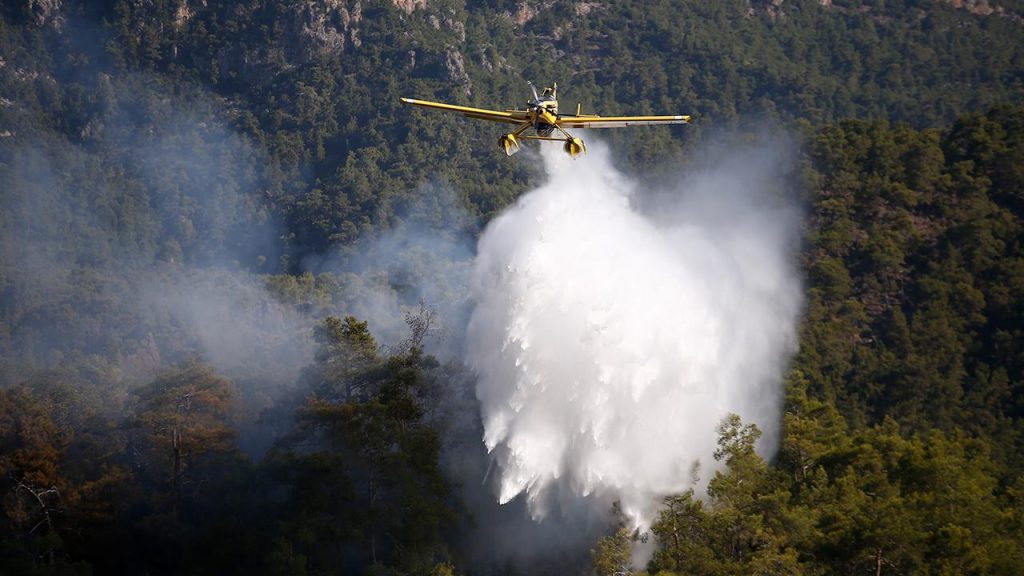Forest fires pose a significant threat to the forests in Turkey, which is located in the Mediterranean climate zone. Sixty percent of the forested area in the country is classified as being highly susceptible to first and second degree fires, prompting the General Directorate of Forestry (OGM) to remain on high alert against potential wildfires.
In efforts to effectively combat forest fires, educational and informative campaigns are prioritized. Last year, training sessions were provided to various groups, including civil society organizations, hunters, shepherds, farmers, students, employees of tourism agencies and facilities, military units, local fire departments, forest villagers, and volunteer firefighters.
To prevent the spread of forest fires, fire safety roads and lanes are constructed and maintained. In addition, 120,000 individuals were registered as fire volunteers to combat flames and prevent fire outbreaks. Furthermore, 22,950 fire-resistant suits and 23,613 pairs of boots were procured and distributed to relevant departments.
Physical measures were taken to intervene in 2,579 forest fires last year, resulting in damage to 15,520 hectares of forest land. Of these fires, 2,088 were attributed to negligence, carelessness, and accidents, 92 were intentional, and 399 were caused by natural factors such as lightning strikes.
Given the geographical location of the country and the impact of climate change, the decreasing humidity, extreme temperatures, and wind make firefighting increasingly challenging each year. The forestry department continuously updates or expands its aerial and ground capabilities. Consequently, the number of personnel involved in firefighting increased from 21,000 to 25,000 in 2022.
The number of planes increased from 5 in 2021 to 20 in 2022 and 24 in the previous year. This year, 26 aircraft will be utilized to combat fires. The helicopter fleet increased from 25 in 2020 to 45 in 2021, 86 in 2022, and 100 last year. Currently, 105 helicopters are available for fire suppression.
The effectiveness of drones (UAVs) in scanning forest areas to inform and coordinate teams during potential fires or active wildfires continues to increase annually. In 2021, 4 drones were used, rising to 10 in both 2022 and 2023, with 14 drones deployed across the country this year.
The number of ground vehicles has also been ramped up. In 2020 and 2021, 1,350 bulldozers were used, increasing to 1,385 in 2022, 1,546 in 2023, and now 1,605 vehicles are dedicated to firefighting tasks. Additionally, 821 pieces of machinery and 2,623 first response vehicles will support firefighting efforts.


